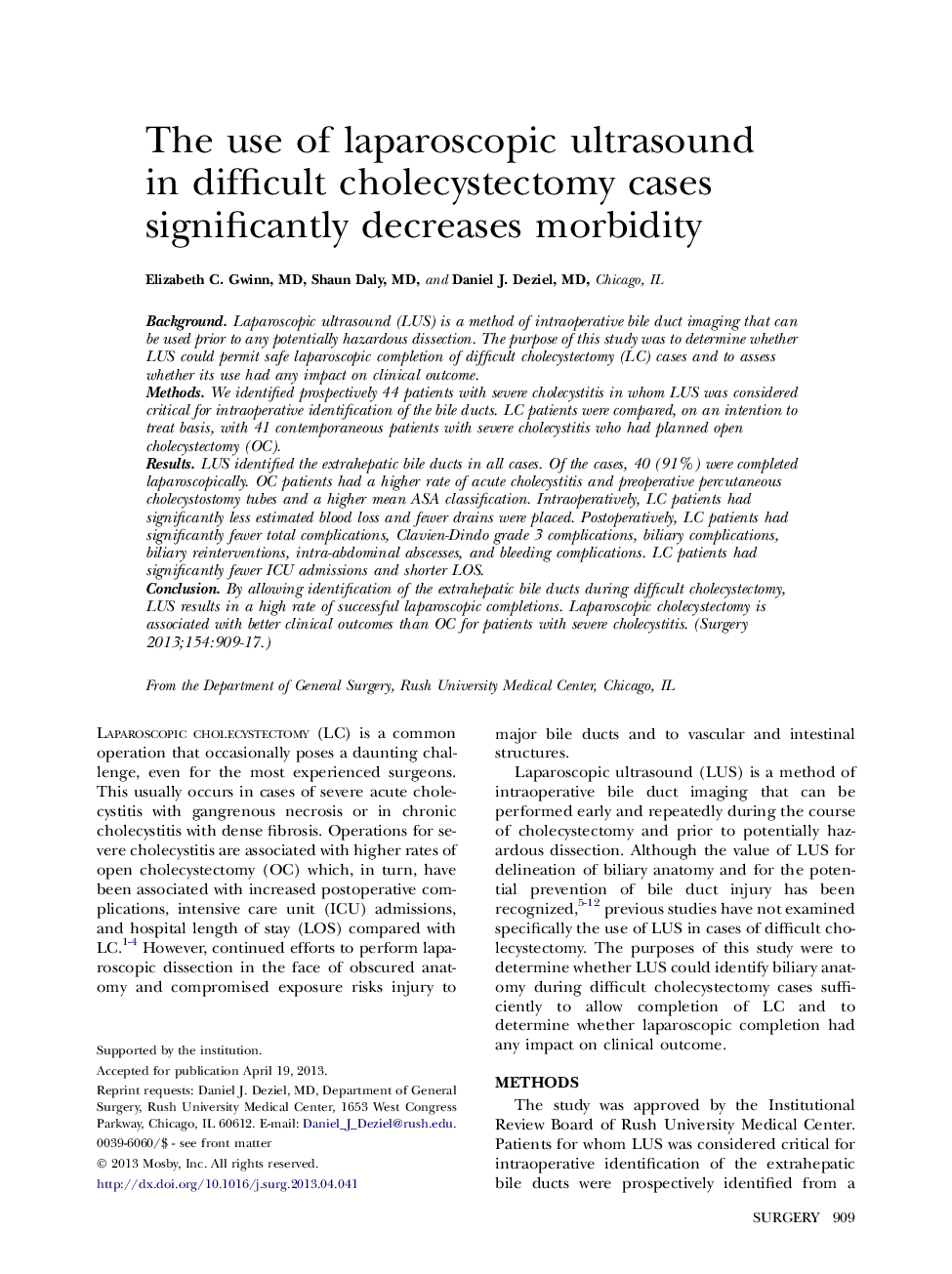| Article ID | Journal | Published Year | Pages | File Type |
|---|---|---|---|---|
| 4307564 | Surgery | 2013 | 9 Pages |
BackgroundLaparoscopic ultrasound (LUS) is a method of intraoperative bile duct imaging that can be used prior to any potentially hazardous dissection. The purpose of this study was to determine whether LUS could permit safe laparoscopic completion of difficult cholecystectomy (LC) cases and to assess whether its use had any impact on clinical outcome.MethodsWe identified prospectively 44 patients with severe cholecystitis in whom LUS was considered critical for intraoperative identification of the bile ducts. LC patients were compared, on an intention to treat basis, with 41 contemporaneous patients with severe cholecystitis who had planned open cholecystectomy (OC).ResultsLUS identified the extrahepatic bile ducts in all cases. Of the cases, 40 (91%) were completed laparoscopically. OC patients had a higher rate of acute cholecystitis and preoperative percutaneous cholecystostomy tubes and a higher mean ASA classification. Intraoperatively, LC patients had significantly less estimated blood loss and fewer drains were placed. Postoperatively, LC patients had significantly fewer total complications, Clavien-Dindo grade 3 complications, biliary complications, biliary reinterventions, intra-abdominal abscesses, and bleeding complications. LC patients had significantly fewer ICU admissions and shorter LOS.ConclusionBy allowing identification of the extrahepatic bile ducts during difficult cholecystectomy, LUS results in a high rate of successful laparoscopic completions. Laparoscopic cholecystectomy is associated with better clinical outcomes than OC for patients with severe cholecystitis.
